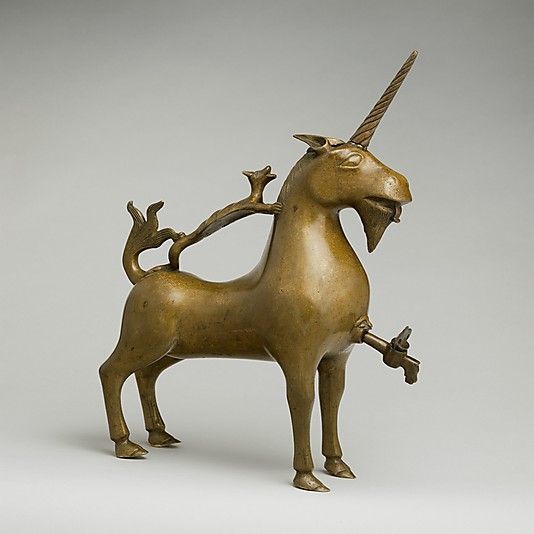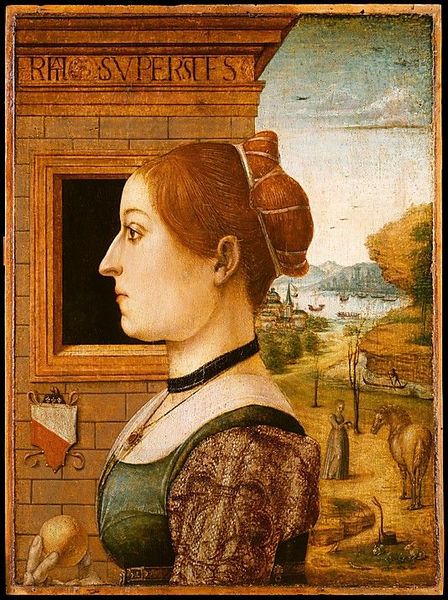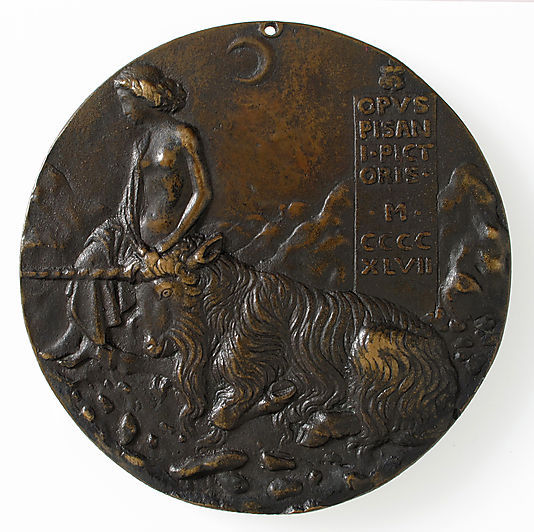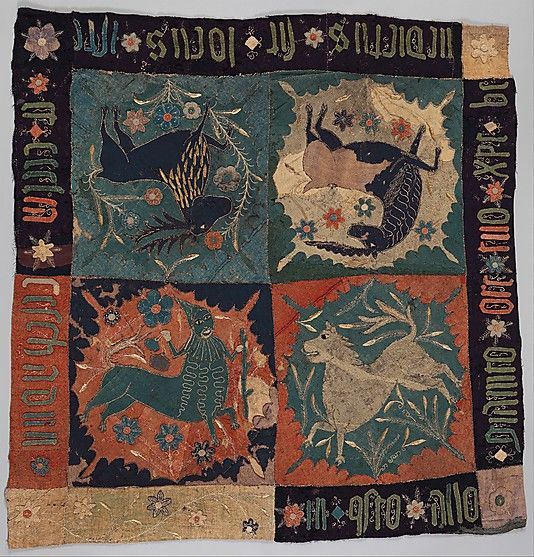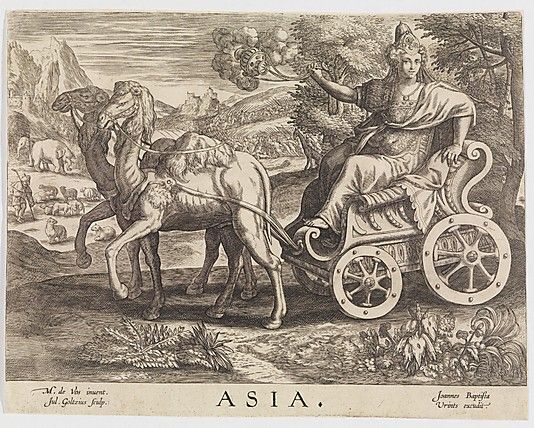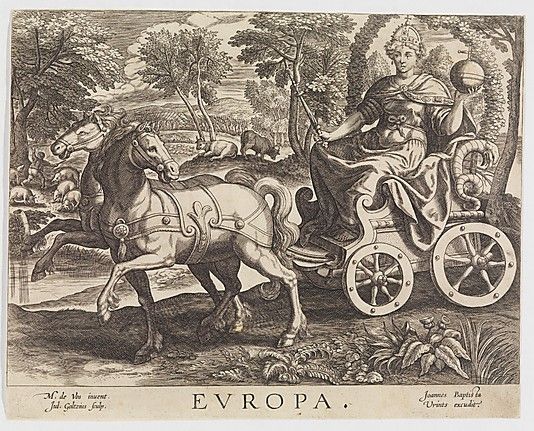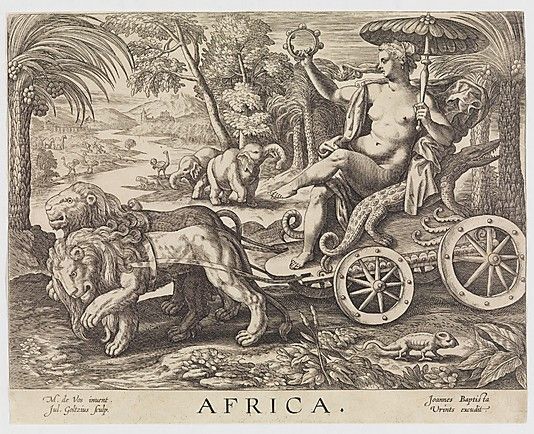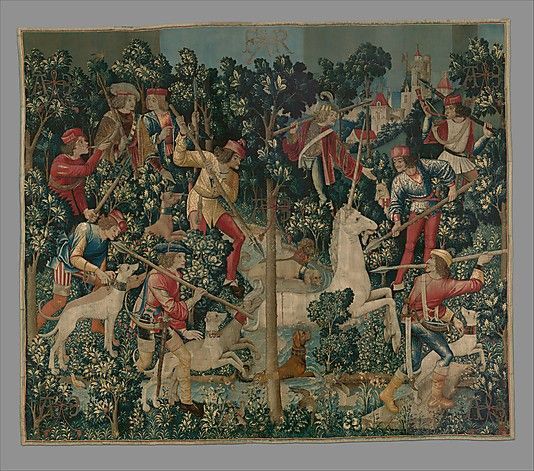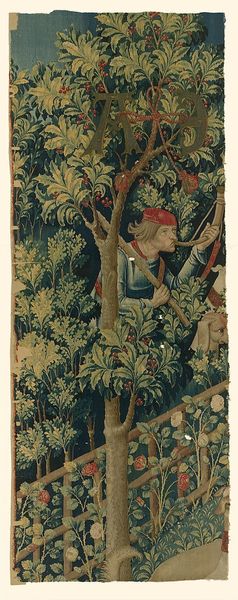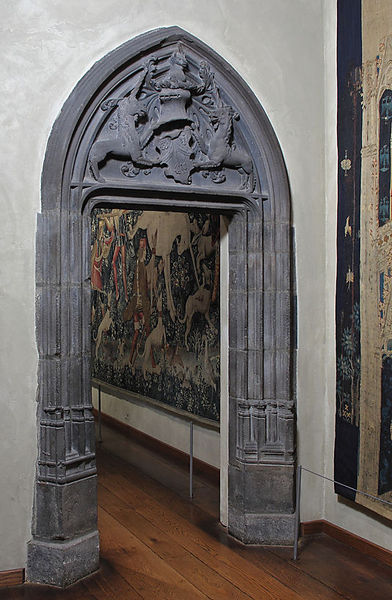The Unicorn in Captivity, South Netherlandish, ca. 1495–1505. Wool, silk, and silver and gilded-silver wrapped thread, 12 ft. 1 in. x 99 in. The Metropolitan Museum of Art, Gift of John D. Rockefeller Jr., 1937 (37.80.6) Image: © The Metropolitan Museum of Art, New York
NEW YORK, NY.- An exhibition focused on the theme of the unicorn in medieval and Renaissance art marks the 75th anniversary of the founding of The Cloisters museum and gardens—the branch of The Metropolitan Museum of Art dedicated to the art and architecture of medieval Europe. On view now at The Cloisters, the exhibition Search for the Unicorn: An Exhibition in Honor of The Cloisters’ 75th Anniversary includes some 40 works of art in diverse media drawn from the collections of the Metropolitan Museum, other public institutions, and private collections.
Among the Museum’s most treasured objects, the seven individual hangings collectively known as the Unicorn Tapestries are among the most beautiful and complex works of art surviving from the late Middle Ages. Woven in wool and silk, the tapestries depict vividly a hunt for the magical unicorn set against a verdant landscape. The exhibition presents the Unicorn Tapestries as the finest expression of a subject treated widely in both European art and science, from the Middle Ages through the Renaissance. Given by John D. Rockefeller Jr. in time for the opening of The Cloisters in 1938, the Unicorn Tapestries are its best-known masterpieces; yet, 75 years later, their history and meaning remain as elusive as the mythical beast itself. The tapestries have been seen both as complicated metaphors for Christ and as a celebration of matrimony. They are emblematic of medieval notions of the magic inherent in the natural world that endured through the Renaissance.
The Morgan Library and Museum lent its celebrated English Bestiary, a 12th-century manuscript that depicts the unicorn with its head in the lap of a maiden. A late 15th-century majolica dish made for the marriage of Matthias Corvinus (1440–1490), king of Hungary, and Beatrix of Aragon presents a similar image of the unicorn as a metaphor of love and marriage, with the couple’s entwined coats of arms reinforcing the idea of a happy alliance. A pair of unicorns draws a golden chariot representing Chastity on a Florentine desco da parto, a tray or salver painted in celebration of the birth of a child (North Carolina Museum of Art). In the Meshal ha-Kadmoni (Fable of the Ancients), unicorns and other animals are used to present moral lessons. The first printed and illustrated edition of this 13th-century Hebrew text, published in Brescia, Italy in 1491, is on loan from The Library of The Jewish Theological Seminary. The text of the nearly contemporary Peregrinatio in terram sanctam, an illustrated travel diary to the Holy Land that was printed in Germany in 1486 and is in the collection of the Metropolitan Museum, claims that its woodcut of a unicorn was drawn from life. Indeed, the unicorn was often associated with faraway lands.
A page from a 14th-century copy of the Shahnama, a 10th-century text that recounts the legendary deeds of the Persian kings, features Iskandar (Alexander the Great) killing the monster of Habash (Ethiopia), an elegant one-horned beast, quite like a unicorn. A 16th-century engraving by Julius Goltzius after Maerten de Vos suggests that the unicorn’s natural habitat was the American continent! Where the creature resided might be debated, but unicorns were included—and depicted—in early encyclopedias of animals, like Konrad Gesner’s treatise, published in four volumes, 1551–58. (These works are also drawn from the Metropolitan Museum’s collection.)
Parade Saddle, ca. 1450. German or Tyrolean. Carved bone with traces of polychromy, mounted on a wood frame. Length, 22 in. (54.8 cm) Height, 16 1/2 in. (41.9 cm) Width, 17 in. (43.2 cm). Rogers Fund, 1904 (04.3.250). Image: © The Metropolitan Museum of Art, New York
Unicorn Aquamanile, ca. 1425–50. Made in Nuremberg, Germany. Copper alloy. Overall (to tip of horn): 15 1/2 x 11 1/2 x 4 7/16 in. (39.4 x 29.2 x 11.3 cm) Weight PD: 108.8oz. (3085g). Gift of Irwin Untermyer, 1964 (64.101.1493). Image: © The Metropolitan Museum of Art, New York
Painted Box, ca. 1300. Made in Upper Rhine region, Germany. Wood, polychromy and metal mounts. Overall: 3 1/8 x 10 3/8 x 3 5/8 in. (7.9 x 26.4 x 9.2 cm). Purchase, Gift of J. Pierpont Morgan, by exchange, 1976 (1976.327). Image: © The Metropolitan Museum of Art, New York
Attributed to the Maestro delle Storie del Pane (Italian (Emilian), active late 15th century). Portrait of a Woman, possibly Ginevra d'Antonio Lupari Gozzadini, 1494?. Italian, Emilia Romagna. Tempera on wood. Overall 19 3/4 x 14 5/8 in. (50.2 x 37.1 cm); painted surface 19 1/8 x 14 1/8 in. (48.6 x 35.9 cm). Robert Lehman Collection, 1975 (1975.1.96). Image: © The Metropolitan Museum of Art, New York
Workshop of Apollonio di Giovanni di Tomaso (Italian, Florence ca. 1416–1465 Florence), Birth Tray (Desco da Parto) with the Triumph of Chastity (recto) and Naked Boys with Poppy Pods (verso), ca. 1450–60. Italian (Florence). Tempera and gold leaf on panel. Overall: 23 × 23 1/4 in. (58.4 × 59.1 cm). North Carolina Museum of Art, Raleigh, Gift of the Samuel H. Kress Foundation. Image: © The Metropolitan Museum of Art, New York
Dish with the Arms of Matthias Corvinus and Beatrix of Aragon, probably ca. 1486–88. Italian, Pesaro. Tin-glazed earthenware (maiolica). Overall (confirmed): H. 4 x W. 18 7/8 x W. 18 7/8 in. (10.2 x 47.9 x 47.9 cm). Fletcher Fund, 1946 (46.85.30). Image: © The Metropolitan Museum of Art, New York
Martin Schongauer (German, Colmar ca. 1435/50–1491 Breisach), Seated Lady Holding a Shield with an Unicorn, 15th century. Engraving. Diameter: 3 1/16 in. (7.8 cm). Harris Brisbane Dick Fund, 1928 (28.26.8). Image: © The Metropolitan Museum of Art, New York
Abu'l Qasim Firdausi (935–1020), "Iskandar Kills the Monster of Habash," From a Book of Kings (Shahnama). Folio from an illustrated manuscript, ca. 1300–30. Northwestern Iran or Baghdad. Ink, opaque watercolor, silver, and gold on paper. Painting: H. 2 1/8 in. (5.4 cm) W. 4 7/8 in. (12.4 cm) Page: H. 7 1/4 in. (18.4 cm) W. 6 1/8 in. (15.6 cm) Mat: H. 19 1/4 in. (48.9 cm) W. 14 1/4 in. (36.2 cm). Rogers Fund, 1969 (69.74.5). Image: © The Metropolitan Museum of Art, New York
Zakaria bin Muhammad bin Mahmud Abu Yahya Qazwini (ca. 1203–83), `Aja'ib al-Makhluqat wa Ghara'ib al-Mawjudat (The Wonders of Creation and the Oddities of Existence). Copied 1701, Mughal India. Tempera and ink on paper. Overall: 8 3/4 × 11 7/8 in. (22.3 × 30 cm) open. U.S. National Library of Medicine, Bethesda, History of Medicine Division. Image: © The Metropolitan Museum of Art, New York
A Maiden Taming a Unicorn, from the Worksop Bestiary, ca. 1185. British (possibly Lincoln or York). Tempera, gold, and ink on parchment. Overall: 8 1/2 × 6 1/8 in. (21.5 × 15.5 cm). The Pierpont Morgan Library, New York. Image: © The Metropolitan Museum of Art, New York
Pisanello (Antonio Pisano) (Italian, Pisa or Verona by 1395–1455), Medal of Cecilia Gonzaga (verso), model 1447 (old aftercast). Italian, Mantua. Copper alloy with warm brown patina under a worn layer of black wax; pierced. Diam. 8.4 cm, wt. 142.55 g. Robert Lehman Collection, 1975 (1975.1.1307). Image: © The Metropolitan Museum of Art, New York
Medal of Cornelio Musso, mid-16th century. North Italian. Copper alloy. Overall: 2 3/8 in. (6 cm). Dr. Stephen K. and Janie Woo Scher Collection. Image: © The Metropolitan Museum of Art, New York
Cover with Unicorns, 16th century. Italian, Perugia. Cotton and bast fibers. L. 87 1/2 x W. 33 inches (222.3 x 83.8 cm). L. 87 1/2 x W. 33 inches (222.3 x 83.8 cm) (17.85). Image: © The Metropolitan Museum of Art, New York
Unicorns at the Fountain (detail), 16th century. Italian. Linen and silk. Overall: 2 3/4 x 19 1/8 in. (7 x 48.6 cm. Gift of Mrs. Frederic B. Pratt, 1922 (22.106). Image: © The Metropolitan Museum of Art, New York
Textile with Unicorn, Deer, Centaur, and Lion, ca. 1500. Made in Scandinavia (possibly Sweden)Wool intarsia and applique with gilt leather and linen embroidery. Overall: 52 3/4 x 52 3/8 in. (134 x 133 cm). The Cloisters Collection, 2011 (2011.430). Image: © The Metropolitan Museum of Art, New York
Narwhal Tusk. Overall: 8 ft. Private collection, New York. Image: © The Metropolitan Museum of Art, New York
Torah Crown, 1778. Polish (Galicia). Silver and gilded silver. Overall: 12 3/16 × 8 1/8 in. (31 × 20.7 cm). Private collection, New York. Image: © The Metropolitan Museum of Art, New York
Johannes Sadeler I (Netherlandish, Brussels 1550–1600 Venice (?)), Adam at Work after the Fall from The Story of the First Men. After Maerten de Vos (Netherlandish, Antwerp 1532–1603 Antwerp), 1583. Engraving; second state of two. Sheet: 8 1/16 × 10 5/8 in. (20.5 × 27 cm). The Elisha Whittelsey Collection, The Elisha Whittelsey Fund, 1951 (51.501.1768(4). Image: © The Metropolitan Museum of Art, New York
Johannes Sadeler I (Netherlandish, Brussels 1550–1600 Venice (?)), The Sixth Day: The Creation of Animals, Adam and Eve from The Creation of the World. After Maerten de Vos (Netherlandish, Antwerp 1532–1603 Antwerp), late 16th century. Engraving. Sheet: 7 13/16 × 9 15/16 in. (19.8 × 25.2 cm). The Elisha Whittelsey Collection, The Elisha Whittelsey Fund, 1951 (51.501.1769(7)). Image: © The Metropolitan Museum of Art, New York
Julius Goltzius (Dutch, died ca. 1595), Asia from The Four Continents. After Maerten de Vos (Netherlandish, Antwerp 1532–1603 Antwerp), 16th century. Engraving. Sheet: 8 5/8 x 11 1/16 in. (21.9 x 28.1 cm). The Elisha Whittelsey Collection, The Elisha Whittelsey Fund, 1949 (49.95.1523). Image: © The Metropolitan Museum of Art, New York
Julius Goltzius (Dutch, died ca. 1595), America from The Four Continents. After Maerten de Vos (Netherlandish, Antwerp 1532–1603 Antwerp), 16th century. Engraving. Sheet: 8 11/16 x 10 15/16 in. (22.1 x 27.8 cm). The Elisha Whittelsey Collection, The Elisha Whittelsey Fund, 1949 (49.95.1524). Image: © The Metropolitan Museum of Art, New York
Julius Goltzius (Dutch, died ca. 1595), Europa from The Four Continents. After Maerten de Vos (Netherlandish, Antwerp 1532–1603 Antwerp), 16th century. Engraving. Sheet: 8 13/16 x 11 in. (22.4 x 27.9 cm). The Elisha Whittelsey Collection, The Elisha Whittelsey Fund, 1949 (49.95.1525). Image: © The Metropolitan Museum of Art, New York
Julius Goltzius (Dutch, died ca. 1595), Africa from The Four Continents. After Maerten de Vos (Netherlandish, Antwerp 1532–1603 Antwerp), 16th century. Engraving. Sheet: 8 11/16 x 10 7/8 in. (22 x 27.7 cm). The Elisha Whittelsey Collection, The Elisha Whittelsey Fund, 1949 (49.95.1526). Image: © The Metropolitan Museum of Art, New York
Coffret with Scenes from Romances (detail), ca. 1310–1330. Made in Paris, France. Ivory. Overall: 4 5/16 x 9 15/16 x 6 1/4 in. (10.9 x 25.3 x 15.9 cm) Top: 5 7/8 x 9 7/8 x 5/16 in. (15 x 25.1 x 0.8 cm). Gift of J. Pierpont Morgan, 1917 (17.190.173a, b). Image: © The Metropolitan Museum of Art, New York
The Unicorn Purifies Water, 1495–1505. South Netherlandish. Wool warp with wool, silk, silver, and gilt wefts. Overall: 145 x 149in. (368.3 x 378.5cm). Gift of John D. Rockefeller Jr., 1937 (37.80.2). Image: © The Metropolitan Museum of Art, New York
The Unicorn Is Attacked, 1495–1505. South Netherlandish. Wool warp with wool, silk, silver, and gilt wefts. Overall: 145 x 168in. (368.3 x 426.7cm). Gift of John D. Rockefeller Jr., 1937 (37.80.3). Image: © The Metropolitan Museum of Art, New York
The Unicorn Defends Itself, 1495–1505. South Netherlandish. Wool warp with wool, silk, silver, and gilt wefts. Overall: 145 x 158 in. (368.3 x 401.3cm). Gift of John D. Rockefeller Jr., 1937 (37.80.4). Image: © The Metropolitan Museum of Art, New York
The Unicorn is Killed and Brought to the Castle, 1495–1505. South Netherlandish. Wool warp with wool, silk, silver, and gilt wefts. Overall: 145 x 153in. (368.3 x 388.6cm). Gift of John D. Rockefeller Jr., 1937 (37.80.5). Image: © The Metropolitan Museum of Art, New York
The Mystic Capture of the Unicorn, 1495–1505. South Netherlandish. Wool warp with wool, silk, silver, and gilt wefts. Overall: 66 1/2 x 25 1/2 in. (168.9 x 64.8 cm). Gift of John D. Rockefeller Jr., 1937 (38.51.1). Image: © The Metropolitan Museum of Art, New York
The Mystic Capture of the Unicorn, 1495–1505. South Netherlandish. Wool warp with wool, silk, silver, and gilt wefts. Overall: 78 x 25 1/2 in. (198.1 x 64.8 cm). Gift of John D. Rockefeller Jr., 1937 (38.51.2). Image: © The Metropolitan Museum of Art, New York
Unicorn Doorway, early 16th century. Made in Auvergne, France. Volcanic stone. Overall: 126 x 65 in. (320 x 165.1 cm). The Cloisters Collection, 1948 (48.28). Image: © The Metropolitan Museum of Art, New York


